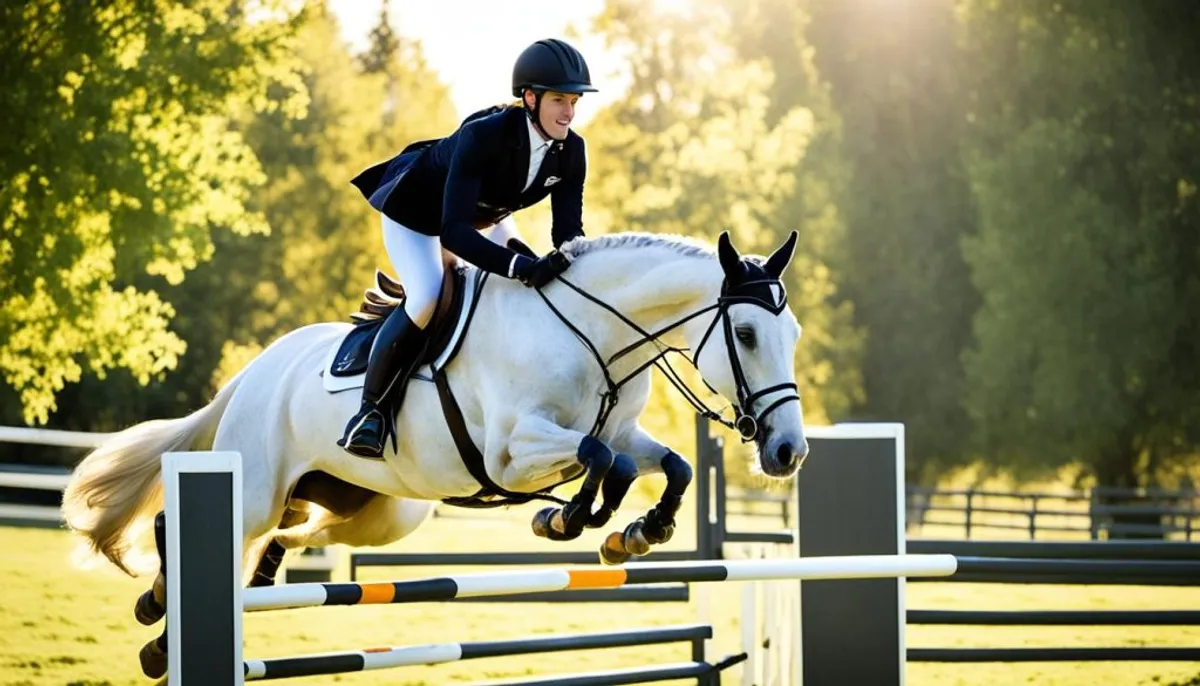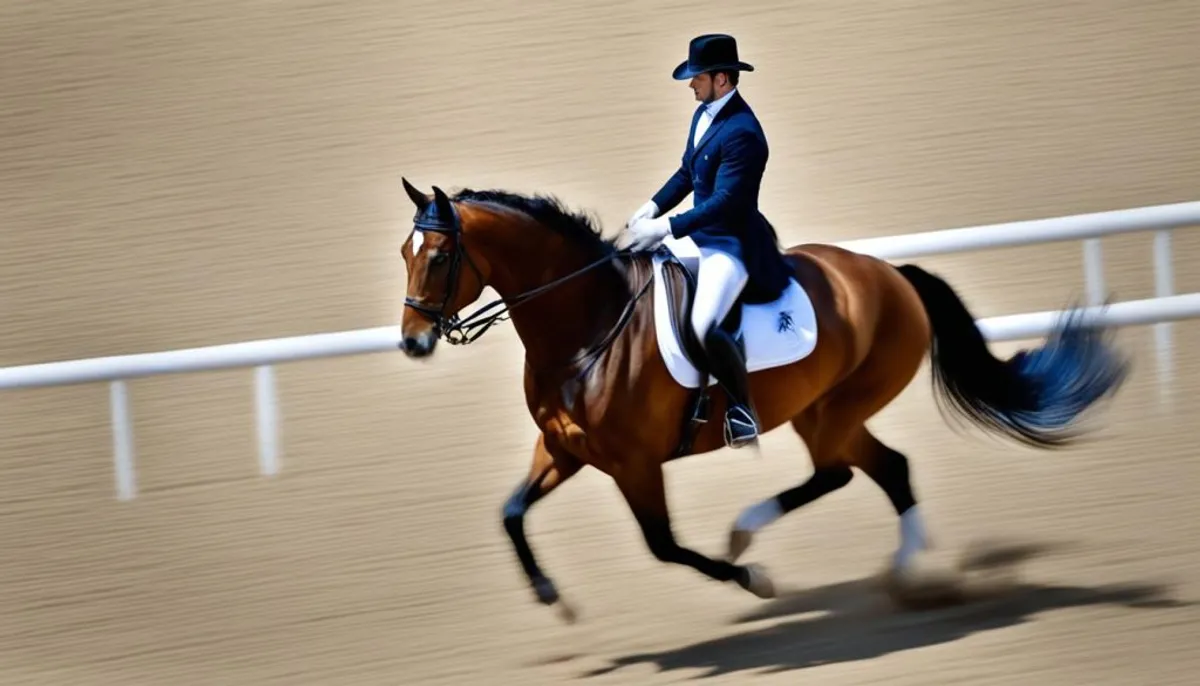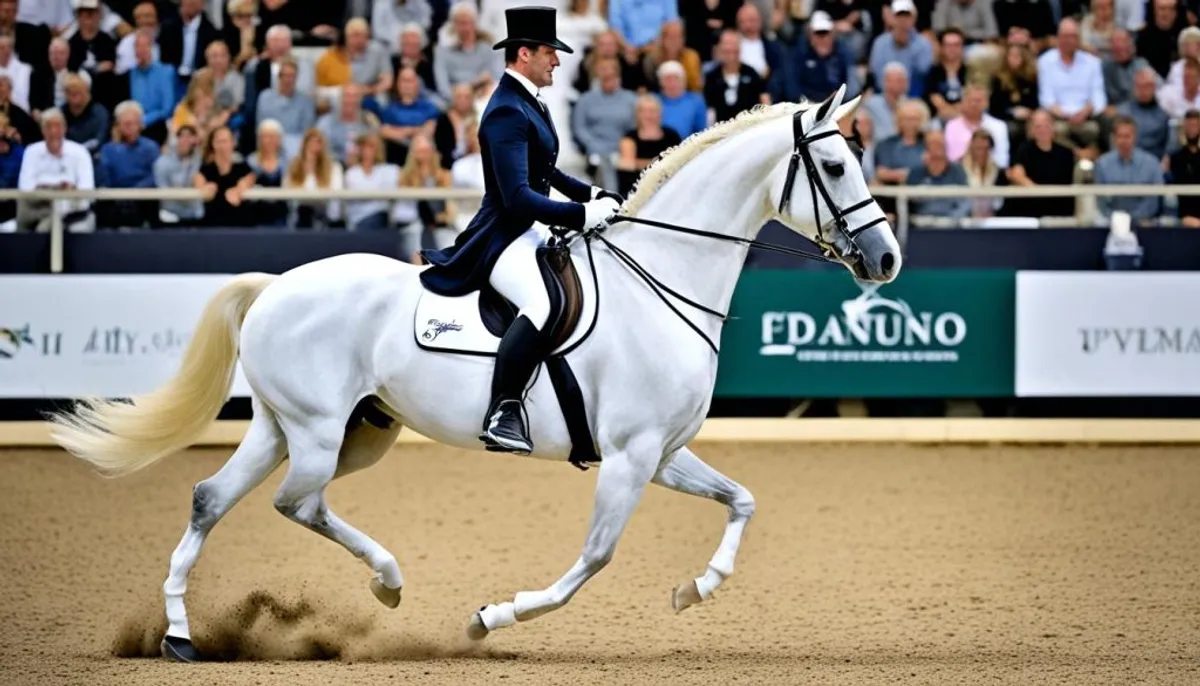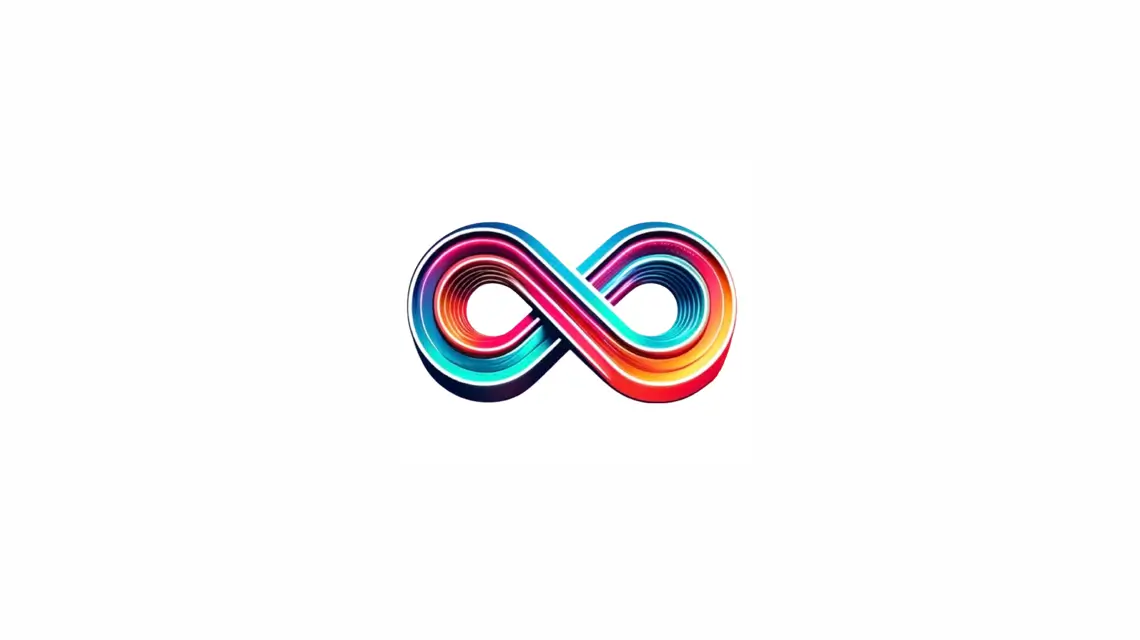The manege figures in riding are precise patterns performed in a manege. They are done by following letters to know where to go. They improve the flexibility and maneuverability of the horse. These figures are essential for mastering classical riding and its refinement.
They are important in other equestrian sports, such as show jumping. It is crucial to know how to execute them for safe and beautiful riding. One starts learning these figures from the very beginning of their training. This helps to move safely in a group in the manege.

Key Ideas
- The manege figures are precise patterns practiced in riding
- They develop the flexibility and maneuverability of the horse
- Essential in classical riding, they are important in all disciplines
- Mastering these figures is essential for autonomous and elegant riding
- They also allow for safe movement during group lessons
What are the manege figures in riding?
In riding, manege figures are courses that riders follow. They can be straight or curved. Riders practice them in a manege or an outdoor arena.
These patterns help riders become more flexible and better control their horse. They also improve the rider's balance. It is a good way for riders to learn to master their horse better.
Fundamentals of manege figures
The basic figures are performed in a clearly defined space, often a rectangle. This rectangle helps riders maintain good posture. Here are examples of basic figures:
- The circle: a circular path educates the flexibility and maneuverability of the horse.
- The volte: a half-circle to improve the horse's flexibility.
- The straight line: a simple line that works on the horse's straightness.
- The change of hand: a crossing in diagonal to be more responsive.
These figures are the foundations of equestrian skills. They help refine the control of the horse and oneself.

By frequently practicing these courses, riders improve. They become more coordinated with their horse. It is also a good way to see what is going well and what needs improvement.
The 10 essential manege figures
The manege figures are essential in riding. They help both riders and horses improve. Among these figures, ten are crucial to learn. Let's see which ones are the most important.
The circle
The circle is a crucial figure. A rider and their horse turn in a circle of 20 meters. This improves the horse's balance and its ability to follow a curved line.
The volte
The volte is more difficult. It is a smaller circle, 10 meters or less. The horse must be flexible and the rider precise to maintain such a small circle.
- The circle
- The volte
- The diagonal
- The double
- The serpentine
- The half-volte
- The shoulder in
- The counter shoulder in
- The change of lead
- The passage
These ten figures are important for an advanced rider. They help improve balance, flexibility, and precision. Both the horse and the rider benefit from them.
| Manege Figure | Description | Benefits |
|---|---|---|
| Circle | Movement in a complete circle | Develops balance and the ability to follow a curved path |
| Volte | Small circle of 10 meters in diameter or less | Requires flexibility and precision, strengthens balance |
Riding manege figures: developing flexibility and balance
The manege figures gradually improve the horse. They make it more flexible and balanced. Flexibility refers to the horse's ease of movement, without tension. When the horse is strong and balanced, it can learn to collect perfectly under the rider.
Advanced movements
The piaffer, the passage, and the pirouette are very advanced movements. They require great balance and good technique from the rider. The rider must communicate well with their horse:
- The piaffer is a trot in place. The horse lifts its legs in rhythm, while standing still.
- The passage is an extended gait where the horse seems to float a bit. It is a very majestic pace.
- The pirouette is a tight turn. The horse turns around its own leg, in a way.
Mastering these movements shows how well-trained the horse and rider are. They are a strong and confident team.

Tips for Progressing
Do you want to master the manege figures in riding? It is possible with the right advice and regular training. Here are some practical tips to progress.
Working with an experienced riding instructor makes all the difference. These professionals know everything about horses and riding techniques. They can guide you to improve your figures.
Participating in clinics or having private sessions with an instructor is also very helpful. You will receive personalized advice. This will help you improve your riding.
Do not neglect your horse's conditioning. Being in good physical shape greatly improves its performance. It increases its endurance and flexibility.
Stay informed about the latest competition rules in riding. The French Equestrian Federation (FFE) offers online guides. This will help you stay up to date.
By applying these tips, you can progress quickly. You might even become excellent in no time!
Conclusion
The basic figures are crucial for a beginner rider. They help become more autonomous. For an advanced rider, complex figures are a source of endless progression.
They require practice, but offer unmatched beauty in competition. The elegance of movements at a gallop creates spectacular performances.
No matter your level, the key is consistent training. This will lead you to good results, where your elegance will impress. Be proud of your achievements. The world of horses holds a magnificent adventure for you.
FAQ
What are the manege figures in riding?
In riding, precise patterns are followed in a closed space. These are done according to letters that serve as guides. These figures help horses become more flexible and maneuverable. They are essential everywhere, not just in dressage, but also in show jumping.
Why are manege figures important in horse training?
These figures are key for training because they reveal a lot about the horse. If a figure fails, it shows where to work for both the rider and the horse. Thus, one knows how to improve together.
What are the 10 essential manege figures?
Here are the 10 key figures: the circle, the volte, the diagonal, the double, the serpentine, the half-volte, the spiral in, the spiral out, the figure eight, and the crossing.
How do manege figures help develop the horse's flexibility and balance?
The shapes of the figures gradually improve the horse's flexibility. They also allow for working on its balance. Movements like the piaffer or the passage help strengthen these qualities.
What are the tips for progressing in mastering manege figures?
To improve, one should attend clinics with a professional. It is also important to train the horse well. Knowing the competition rules helps too. The French Equestrian Federation updates them regularly.
RelatedRelated articles



